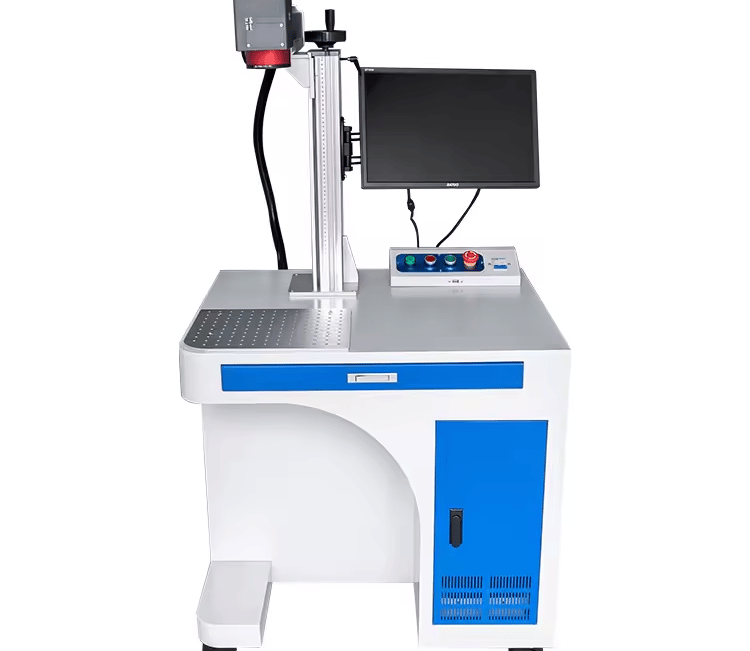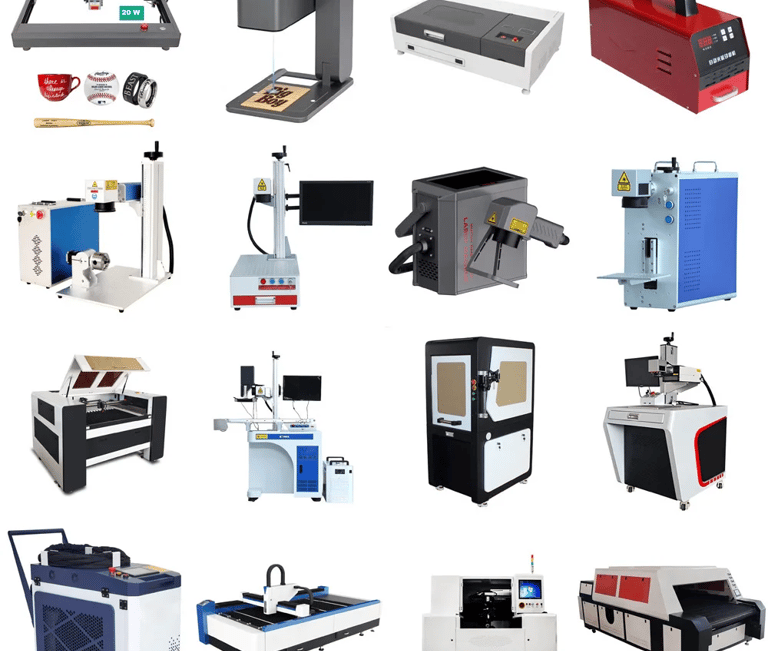Unlocking the Power of Laser and UV Technology: The Complete Guide to Engraving Machines for Leaves, Metal, Glass, and More
INDUSTRIAL SUPPLIESLEON MACHINERY
7/6/20235 min read


The Revolution of Laser and UV Engraving
Laser engraving technology has dramatically transformed how we interact with materials, creating intricate designs and patterns with high precision. Whether it’s for personalization, branding, or artistic expression, engraving and printing machines—especially those using UV and laser technology—offer endless possibilities. The ability to work with a wide array of materials, from leaves and wood to metal and glass, makes these machines indispensable tools for industries across the globe.
In this blog, we will dive into the different types of engraving and printing machines available on the market. From compact DIY models to large-scale industrial machines, we'll explore the features, benefits, and unique applications of each. We’ll also discuss how different types of lasers, like diode, fiber, CO2, and UV, make it possible to work with materials like wood, metal, leather, fabric, and even leaves.
Understanding Laser Technology in Engraving Machines
Laser engraving machines utilize a focused beam of light to etch or cut through materials. There are various types of lasers, and each one has specific advantages depending on the material you're working with. Understanding the basics of laser technology is crucial to selecting the right machine for your needs.
Diode Lasers: These are commonly found in smaller, DIY models. Diode lasers use semiconductors to emit light at specific wavelengths, often around 450nm. While they’re great for non-metallic materials, they work best on flat surfaces and may not provide the depth or detail needed for intricate designs on harder materials.
Fiber Lasers: Fiber lasers are known for their high efficiency and precision, making them ideal for metal engraving. With a wavelength of around 1064 nm, these lasers can cut and engrave metal surfaces and some plastics with incredible accuracy. They're also efficient when it comes to engraving depth, offering clear results on tougher surfaces.
CO2 Lasers: CO2 lasers are versatile, working across a wide range of materials, including wood, acrylic, leather, and glass. CO2 laser machines are commonly used in industrial applications due to their ability to engrave and cut materials with impressive speed and detail. They have wavelengths of around 9.3, 10.2, or 10.6 micrometers, making them particularly effective for non-metal materials.
UV Lasers: UV lasers use ultraviolet light to etch fine, detailed designs on materials such as glass, wood, and even plastic. These lasers are unique in that they leave minimal heat signature, making them ideal for materials that can be damaged by excessive heat. UV lasers can engrave or print detailed, sharp designs without causing any burning or discoloration.
Choosing the Right Engraving Machine: Factors to Consider
Selecting the right laser engraving machine for your projects can be overwhelming given the wide variety of machines on the market. Key factors to consider include:
Power Rating: The power of the laser determines how effectively it can engrave or cut through materials. Machines with higher wattage, such as 80W-260W CO2 lasers, can work with thicker materials or cut through more dense surfaces like metals.
Work Area: The size of the work area determines how large the materials or products you are engraving can be. For small-scale, detailed engraving, a compact machine with a smaller work area (such as 8x8cm or 39x39cm) may suffice. However, for larger projects or industrial uses, machines with work areas of 130x250cm or more are more suitable.
Cooling Type: Cooling systems are important for preventing the machine from overheating. Machines with water cooling systems are typically more powerful and are designed for heavy-duty use. On the other hand, air-cooled machines are generally sufficient for smaller, less intense projects.
Material Compatibility: Different machines are suited for different materials. Some are designed specifically for metal engraving (like fiber lasers), while others are better for non-metallic surfaces (such as CO2 and UV lasers). Consider the materials you'll be working with most frequently when choosing your engraving machine.
Applications of Laser Engraving Machines
Laser engraving machines offer a wide variety of applications across different industries. Below are some of the most common uses:
Personalization and Customization: Whether it’s engraving names, logos, or intricate designs, laser engraving is ideal for personalized products like jewelry, gifts, and awards.
Industrial Marking and Cutting: Laser engraving machines are often used in manufacturing for marking and cutting metal parts, plastic components, and electronic devices. Fiber lasers, in particular, excel at engraving on metal surfaces.
Artistic Creation: Artists are using laser engravers to create detailed artwork on materials like wood, leather, acrylic, and even leaves. The fine detail that can be achieved with these machines has opened up new avenues for artistic expression.
Packaging and Branding: Many businesses use laser engraving for packaging, adding logos, text, or intricate designs to products and packaging materials. The precision and speed of laser engraving machines make them perfect for large-scale branding efforts.
Popular Laser Engraving Machines for Different Materials
Each type of laser engraving machine is suited for specific materials. Here’s a breakdown of the types and the materials they work best with:
DIY Small Models
Diode Laser Engravers: Typically used for smaller, non-metallic materials, diode laser engravers are perfect for engraving on leaves, acrylic, and wood. The compact size and lower wattage make them an ideal choice for hobbyists and DIY projects.
Fiber Laser Engravers: These are often used for engraving on metals. A 2W fiber laser works well for engraving the surface of metals like aluminum, stainless steel, or brass. However, the depth of engraving is usually minimal.
CO2 Laser Machines
Small to Medium CO2 Lasers: These machines are popular for their ability to engrave and cut a wide range of materials, including acrylic, wood, and leather. CO2 lasers are often used for industrial applications as they can handle materials of varying thicknesses and work with both engraving and cutting.
Large CO2 Lasers: With higher power ratings and larger work areas, large CO2 lasers are used in industrial applications that require precision cutting and engraving of larger pieces, such as banners, signage, and large-scale art pieces.
Fiber Laser Machines
Handheld Fiber Lasers: These are typically used for metal engraving and are designed for portability. They are great for engraving on metal parts or stones, offering high precision and the ability to adjust engraving depth.
Desktop Fiber Lasers: These models offer a compact size with high precision, ideal for engraving metals, hard plastics, and stone surfaces. They’re commonly used for creating branded items or customizing metal products.
UV Laser Machines
Desktop UV Lasers: These machines are highly versatile, suitable for engraving on a wide range of materials, including glass, plastic, and even delicate items like leaves. UV lasers are often used for high-detail engraving because they produce sharp, clean results without damaging sensitive materials.
UV Lasers for Glass and Crystal: The UV laser is especially effective for engraving on glass and crystal, leaving intricate designs without causing the material to crack or shatter.
The Future of Laser and UV Engraving Machines
As technology advances, we can expect laser and UV engraving machines to become even more sophisticated. Improvements in laser power, precision, and cooling technology will make these machines more efficient and capable of handling a wider range of materials. New software advancements will also simplify the design process, allowing users to create more intricate and personalized engravings with ease.
Additionally, with the growing interest in sustainability and eco-friendly practices, lasers that work with organic materials like leaves and recycled plastics may become more common. This would open up even more creative possibilities for engraving and printing.
Which Laser Engraving Machine Is Right for You?
Choosing the right laser engraving machine depends on your needs, the materials you plan to work with, and the scale of your projects. Whether you’re engraving intricate designs on leaves, branding metal products, or creating personalized gifts, there’s a laser engraving machine that fits the bill.
The rise of diode, fiber, CO2, and UV laser technologies has revolutionized the way we approach engraving, offering precision, speed, and versatility. With the continued advancements in technology, the possibilities for what you can create with laser and UV engraving are virtually limitless.


